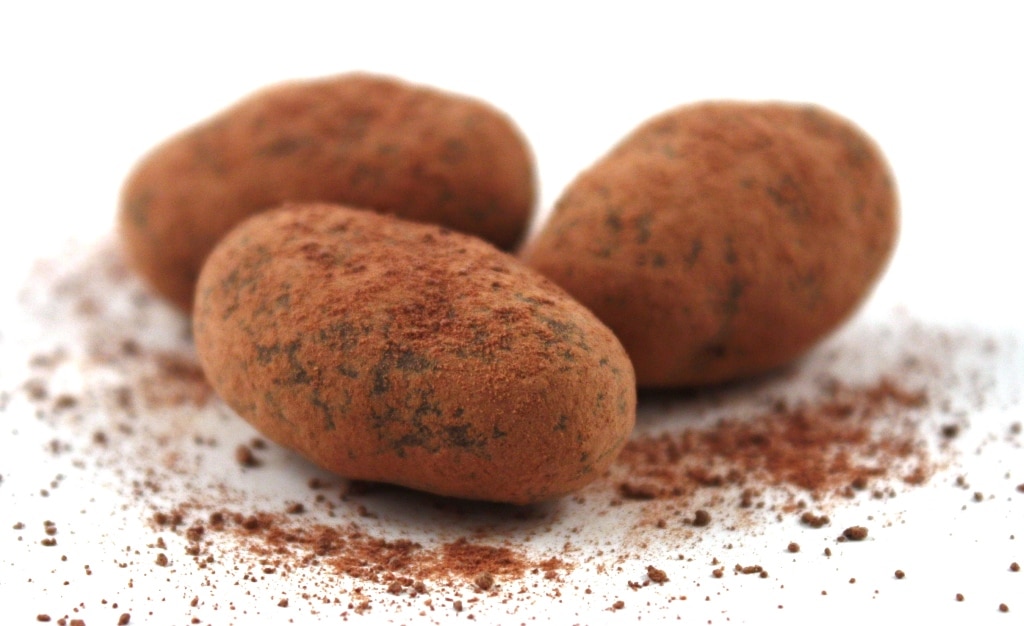In this article, I analyze and illustrate 4 visible trends in the chocolate market. These trends are tied to the explosive rise in cocoa prices.

2025 is a pivotal year for the chocolate market. Cocoa prices hit record highs by the end of 2024 (€11,000 per ton), forcing manufacturers to get creative with their marketing to soften the blow for consumers. The risk was that consumers would turn away from chocolate after a 60% price surge in one year and a 250% increase over three years. The marketing strategies of chocolate brands seem to have worked, as consumption hasn’t wavered. In volume, sales grew by +3.4% year-on-year. In units, growth even reached +6.2%. This consumer loyalty is pushing manufacturers to innovate, and in this article, I share 4 trends in the chocolate market.
Contact the IntoTheMinds market research agency
Chocolate Market in France: Key Figures to Know
- +17.3%: annual growth of the tablet market, reaching €1.66 billion
- 638 million: tablets sold in 2025, up +6.2%
- 27.6%: value share of private labels, up +29.3%
- 13.5%: increase in average price, to €14.12/kg
- €8,000/t: current cocoa price, up +60% in one year
- 98%: satisfaction rate for Abtey’s cocoa-free products
- 40 million: Nestlé’s investment to produce KitKat tablets
Trend 1: Creations Driven by Social Media
In this tense environment, one trend has taken hold: capitalizing on the novelty effect. The example everyone knows is the Dubai Style tablet, filled with pistachio and angel hair, originating from the Middle East. In just a few months, this newcomer won over 140,000 French households, generating nearly €4 million in sales. All thanks to social media.
Lindt was the first to roll out a premium version, followed by Lidl with a more affordable option. Plenty of copycats then jumped on the bandwagon, and today you’ll find these products in every store, even those claiming to be low-cost (which is pretty ironic given the product’s positioning).
From a marketing perspective, this example shows that storytelling is just as crucial as taste in driving sales. The question is whether this strategy is sustainable—great storytelling without exceptional taste won’t bring customers back. We’re already seeing the Dubai Style chocolate trend lose steam as promotions pile up. But no matter. For chocolate manufacturers, the key is to ride the wave of novelty through social media and offer fresh products that tempt consumers to buy.
Trend 2: Chocolate… Without Cocoa
Soaring prices have forced some manufacturers to think outside the box. When vanilla became unaffordable, producers turned to tonka beans. It’s the same with chocolate. A market for cocoa alternatives has emerged. Startups have developed fascinating processes that transform local ingredients—grains, carob, seeds—into textures and flavors close to chocolate.
Choviva is one such alternative. This chocolate substitute was developed by the German company Planet A Foods using sunflower seeds and fermented grape seeds. Several chocolatiers have taken the plunge. In France, for example, Abtey used it for their Easter molds. The results are promising: 88 tons sold, 98% positive reviews, and most importantly, a price 20 to 30% lower than traditional equivalents, which can only boost sales in times of shrinking purchasing power. The cherry on top: an 80% smaller carbon footprint.
Trend 3: Rebranding and New Positioning
Big brands, keen to defend their market share, have rolled out smart strategies. One that sparked a lot of debate is shrinkflation. To keep regular customers, package sizes were reduced while prices stayed the same. This is the approach Côte d’Or took, for instance, while also revamping their logo (and muddying the waters a bit 😉).
Another well-known brand, Poulain, bet on a nostalgia-driven rebranding. Nostalgia isn’t a new marketing trick, but it still works like a charm. By tapping into the “things were better before” vibe, a retro rebranding highlights values that boost perceived quality.
As for Lindt, the leader in the premium segment, they launched the Excellence Fusion line—tablets combining two flavors. I’m not a fan myself, but I’d bet a market study was done beforehand to prove its potential.
Trend 4: Brand Extension
Diversification is all the rage among chocolate manufacturers right now. You’ve probably heard about Nutella’s new products, chasing revenue in categories far beyond hazelnut spread. Then there’s Ferrero, which recently acquired Kellogg for €3.1 billion.
There are plenty of examples, but I want to zoom in on one: KitKat. The brand celebrated its 90th anniversary, long associated with confectionery. They expanded into chocolate with three tablets (Hazelnut, Double Chocolate, Salted Caramel) featuring a marbled design. The go-to-market was backed by a €40 million investment, and in France alone, 182,000 households gave it a try.
And since this extension worked so well, KitKat seized the summer to launch another one in the form of an ice cream bar.






![Illustration of our post "SIAL 2024: 12 tips to organize your visit [Guide]"](https://5cc2b83c.delivery.rocketcdn.me/app/uploads/sial-2018-etude-de-marche-france-alimentation-1-120x90.jpg)
